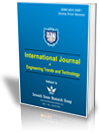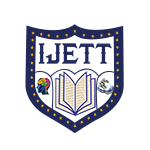SpeakEasy: A Tool for People with Communication Disabilities
SpeakEasy: A Tool for People with Communication Disabilities |
||
 |
 |
|
| © 2025 by IJETT Journal | ||
| Volume-73 Issue-3 |
||
| Year of Publication : 2025 | ||
| Author : Vijay Shelake, Sujata Deshmukh, Max Gonsalves, Vedant Chawardol, Saville Dsilva, Ivan Dsouza |
||
| DOI : 10.14445/22315381/IJETT-V73I3P102 | ||
How to Cite?
Vijay Shelake, Sujata Deshmukh, Max Gonsalves, Vedant Chawardol, Saville Dsilva, Ivan Dsouza, "SpeakEasy: A Tool for People with Communication Disabilities," International Journal of Engineering Trends and Technology, vol. 73, no. 3, pp. 13-21, 2025. Crossref, https://doi.org/10.14445/22315381/IJETT-V73I3P102
Abstract
In this era of digitalization, where everyone is connected, people with communication disabilities may find it difficult to fully participate and engage in interactions. This paper aims to deliver an AI-powered communication system that fulfils the needs of individuals with communication disabilities. It provides the facility to convert Indian Sign Language (ISL) to text and speech in a regional language, providing inclusivity. It will empower people with verbal communication disabilities by breaking the barriers put up by sign language and help them express themselves to others without any restraint. The ultimate purpose of this tool is to create a more inclusive society wherein communication barriers are eliminated for individuals with disabilities. The MediaPipe Holistic Library is used to map key points and extract data for prediction to facilitate the conversion of sign language to text. A sequential framework along with an LSTM and Dense layer is incorporated to identify the signs by action recognition. Once a prediction has been made, a text prompt and audio of the predicted text are played. Through this chain of processes, it is possible to develop a multi-feature Sign Language Recognition system.
Keywords
Communication disabilities, Indian Sign Language, MediaPipe, Neural network, Long Short-Term Memory (LSTM).
References
[1] Elaina Chai, Mert Pilanci, and Boris Murmann, “Separating the Effects of Batch Normalization on CNN Training Speed and Stability Using Classical Adaptive Filter Theory,” 2020 54th Asilomar Conference on Signals, Systems, and Computers, Pacific Grove, CA, USA, pp. 1214-1221, 2020.
[[CrossRef] [Google Scholar] [Publisher Link]
[2] Mihir Deshpande et al., “Sign Language Detection Using LSTM Deep Learning Model and Media Pipe Holistic Approach,” International Conference on Artificial Intelligence and Smart Communication, Greater Noida, India, pp. 1072-1075, 2023.
[CrossRef] [Google Scholar] [Publisher Link]
[3] Fatih Ertam, and Galip Aydın, “Data Classification with Deep Learning Using Tensorflow,” 2017 International Conference on Computer Science and Engineering (UBMK), Antalya, Turkey, pp. 755-758, 2017.
[CrossRef] [Google Scholar] [Publisher Link]
[4] Gerges H. Samaan et al., “MediaPipe’s Landmarks with RNN for Dynamic Sign Language Recognition,” Electronics, vol. 11, no. 19, pp. 1-15, 2022.
[CrossRef] [Google Scholar] [Publisher Link]
[5] Jimmy Jiménez-Salas, and Mario Chacón-Rivas, “A Systematic Mapping of Computer Vision-Based Sign Language Recognition,” 2022 International Conference on Inclusive Technologies and Education, Cartago, Costa Rica, pp. 1-11, 2022.
[CrossRef] [Google Scholar] [Publisher Link]
[6] Hamzah Luqman, “An Efficient Two-Stream Network for Isolated Sign Language Recognition Using Accumulative Video Motion,” IEEE Access, vol. 10, pp. 93785-93798, 2022.
[CrossRef] [Google Scholar] [Publisher Link]
[7] Shreyas Mhatre, Sarang Joshi, and Hrushikesh B. Kulkarni, “Sign Language Detection Using LSTM,” 2022 IEEE International Conference on Current Development in Engineering and Technology (CCET), Bhopal, India, pp. 1-6, 2022.
[CrossRef] [Google Scholar] [Publisher Link]
[8] Orlunwo Placida Orochi, and Ledisi Giok Kabari, “Text-to-Speech Recognition Using Google API,” International Journal of Computer Applications, vol. 183, no. 15, pp. 18-20, 2021.
[CrossRef] [Google Scholar] [Publisher Link]
[9] Yadira Quiñonez, Carmen Lizarraga, and Raquel Aguayo, “Machine Learning Solutions with MediaPipe,” 2022 11th International Conference on Software Process Improvement, Acapulco, Guerrero, Mexico, pp. 212-215, 2022.
[CrossRef] [Google Scholar] [Publisher Link]
[10] G. Mallikarjuna Rao et al., “Sign Language Recognition Using LSTM and Media Pipe,” 2023 7th International Conference on Intelligent Computing and Control Systems (ICICCS), Madurai, India, pp. 1086-1091, 2023.
[CrossRef] [Google Scholar] [Publisher Link]
[11] S.H. Shamitha, and K. Badarinath, “Sign Language Recognition Utilising LSTM and Mediapipe for Dynamic Gestures of ISL,” International Journal for Multidisciplinary Research, vol. 5, no. 5, pp. 1-13, 2023.
[CrossRef] [Publisher Link]

